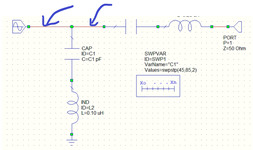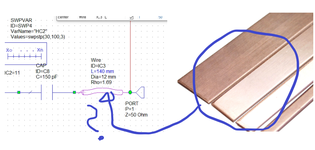ultralsj
Newbie
In case of high frequency, it is very sensitive to copper wire.
The actual product and the simulation result are very different.
so I want to apply a parasitic value to the element and the wire that the element is connected to in the circuit
Is this possible with AWR?
thank you so much for reading this.
happy new years.
The actual product and the simulation result are very different.
so I want to apply a parasitic value to the element and the wire that the element is connected to in the circuit
Is this possible with AWR?
thank you so much for reading this.
happy new years.

